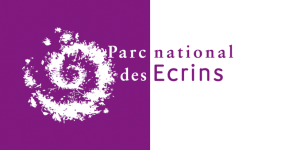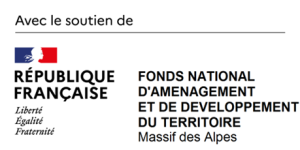Your summit encounters with high-altitude plants
High mountain plants are impressive in their ability to adapt to extreme conditions: they can withstand heavy snowfall, very cold temperatures, UV exposure and drought. In the Himalayas, plants survive at altitudes of over 6,000 meters. In the Alps, the highest plant observed was an opposite-leaved saxifrage (4,505 m altitude) observed in 2010. In the Mont Blanc massif, the highest plant is a Saussure's androsace (4,150m altitude), observed in 2020. In the Ecrins massif, it is an opposite-leaved saxifrage (4,070m altitude).
The distribution and phenology of these plants in the high mountains remain largely unknown, due to the difficulty of access to these areas. At what altitudes are they found? How do their lower and upper distribution limits evolve? At what time of year do these plants flower? This study could provide fundamental knowledge about their biology and biogeography.
The "Vertical Flora" programme was initiated by the Ecrins National Park and the Alpine Ecology Laboratory in Grenoble in 2009, and is deployed by other organisations such as CREA Mont-Blanc, Asters, INRAE in the framework of the Sentinel Refuges project [link]. It invites mountaineers to map the presence of plants on the walls of the Alps and to obtain information related to their flowering.
Target audience
Region
Season
Implementation time
1 minute for the photo, then 5 minutes for entering information
Naturalist difficulty
- Naturalist
- Novice
Involvement
Every observation, even occasional, counts
Species concerned
Access to study site
Equipment
a smartphone (photo)
GPS altimeter
The protocol
1 Locate and photograph
If you spot a plant on a wall during one of your outings, take a photo of it so that you can clearly see its flowers and/or leaves. Feel free to take several photos. Also remember to note the altitude (by taking a photo of your altimeter) and if possible the GPS coordinates (this information is often complicated to assign precisely on the wall, but it will give an indication). Continue your ascent, you will enter your observation on SPOT later.
2 Send
Go to the "Contribute" page !
Practical advice
- You can use the species sheets to help you recognise and distinguish between the various plants. The PlantNet pre-identification module will allow you to obtain an initial identification automatically from your photos.
- Be careful not to put yourself in danger during your observations (attach yourself to a point or a relay, and equip your camera or mobile phone with a string so as not to lose it)
In order to carry out this protocol, you will need to travel in medium/high mountain, which can be dangerous, especially in winter conditions. Do not hesitate to ask professionals for a detailed analysis of weather conditions.
CREA Mont-Blanc cannot be held responsible for any accidents that may occur during the execution of protocols.







